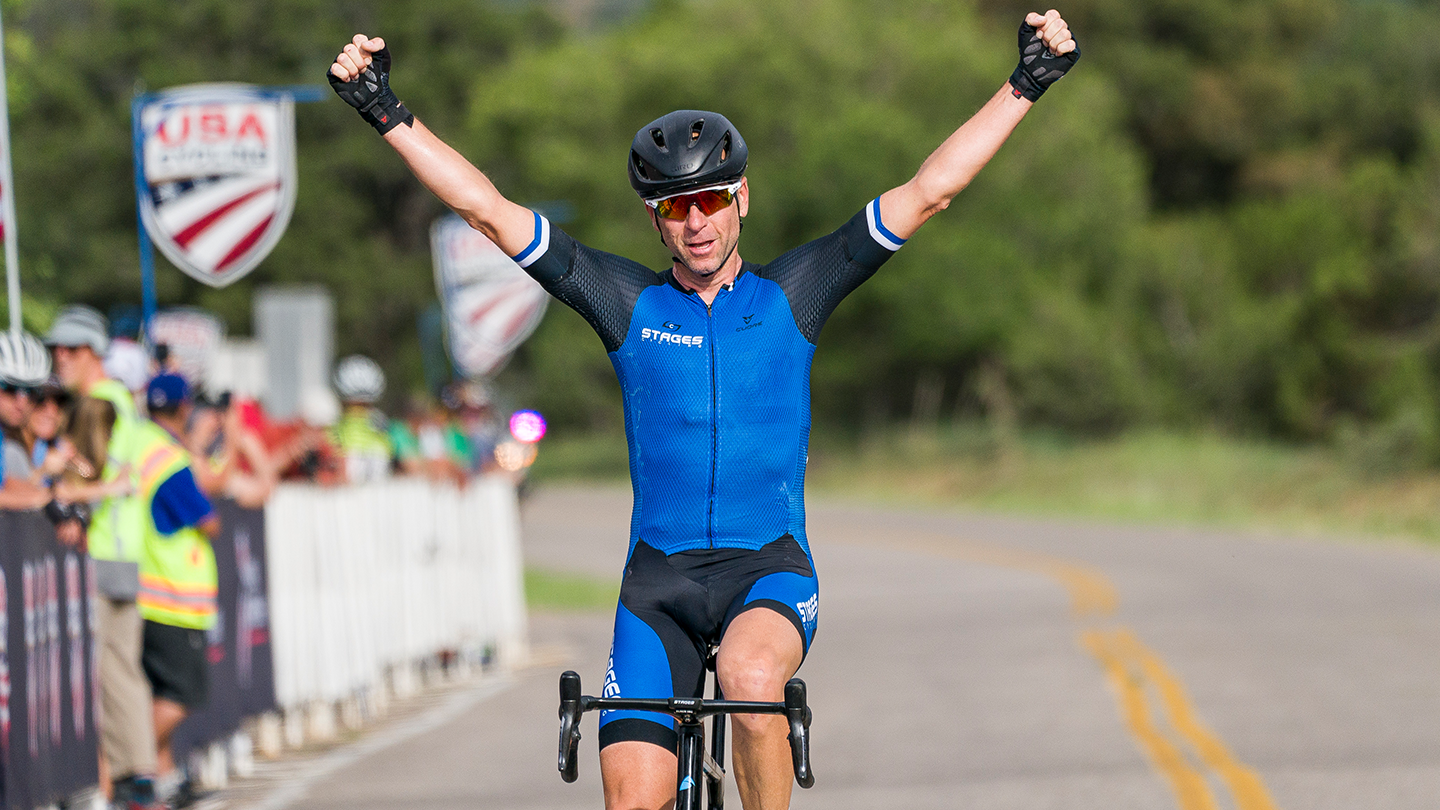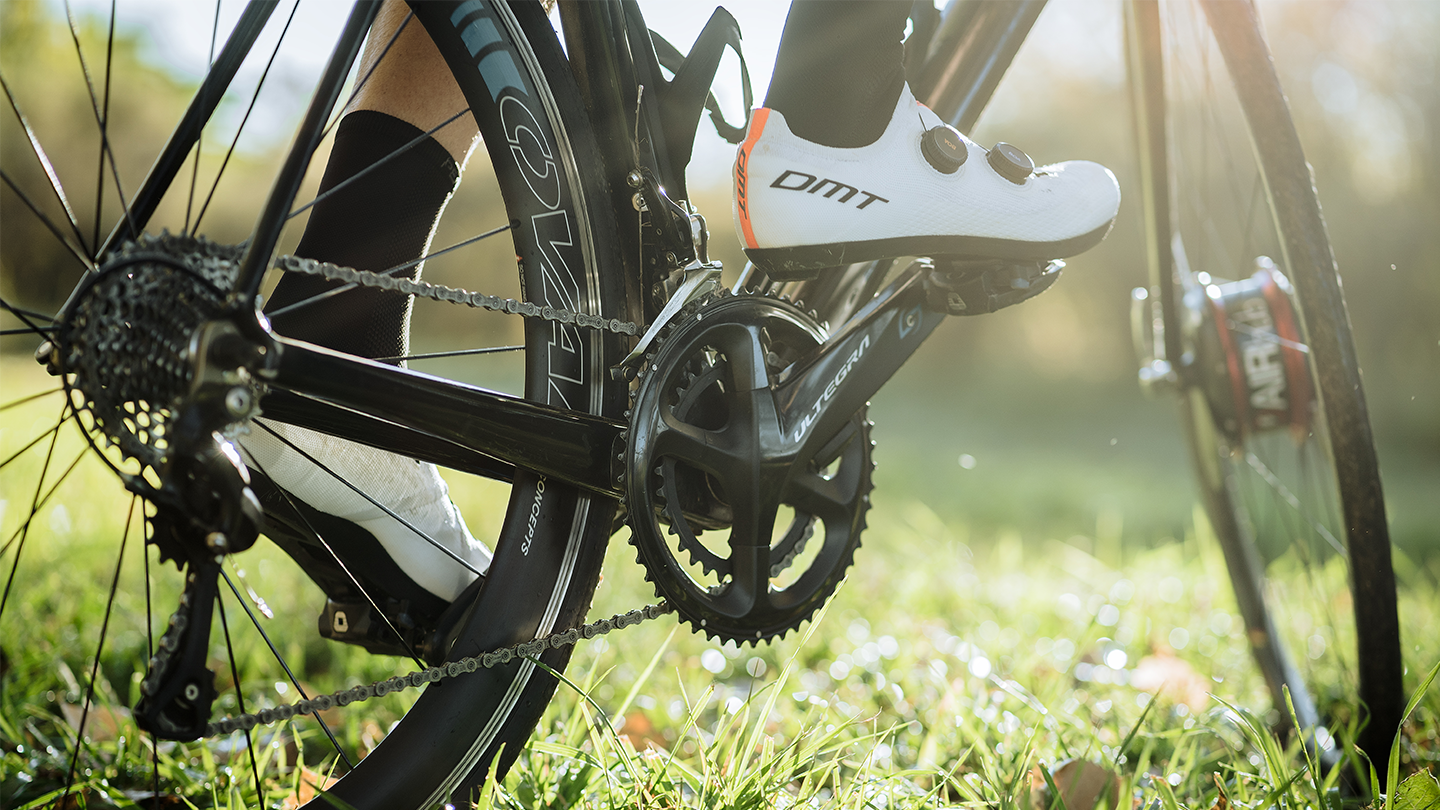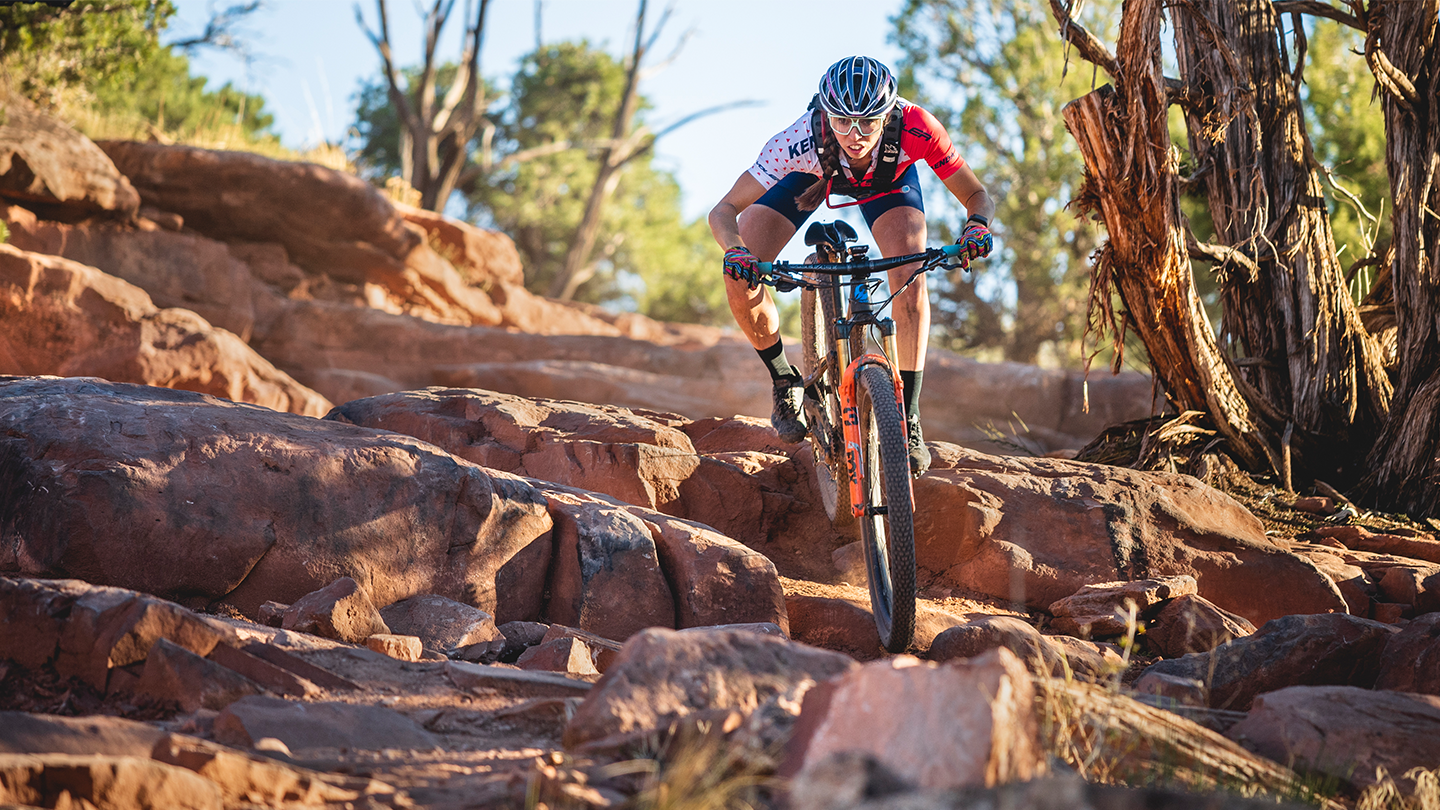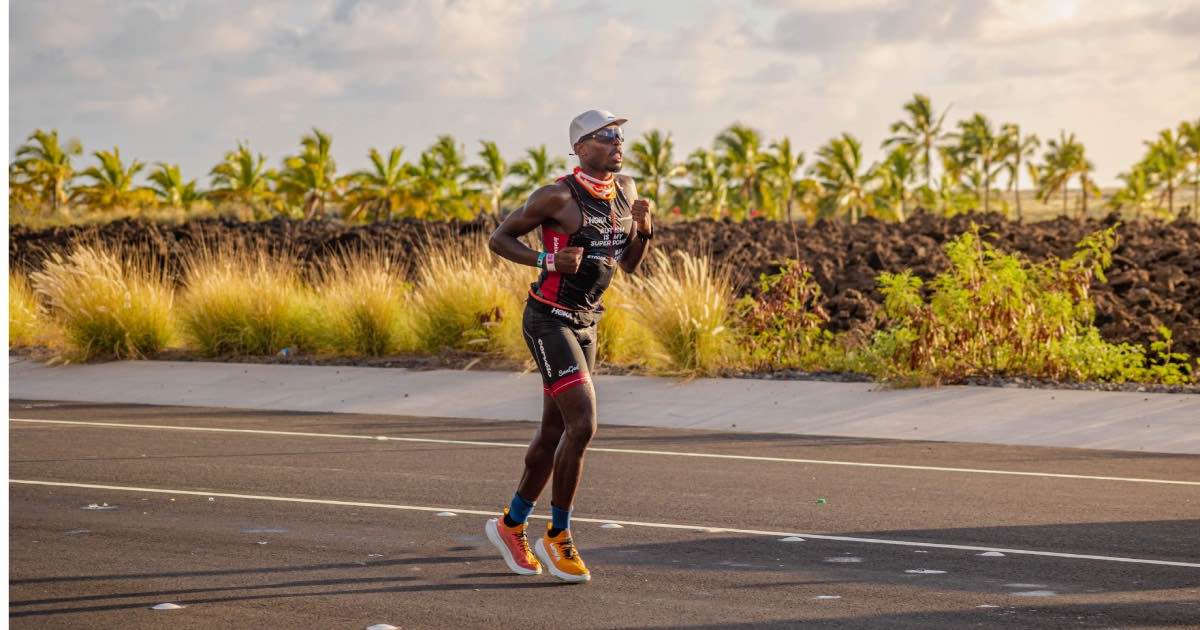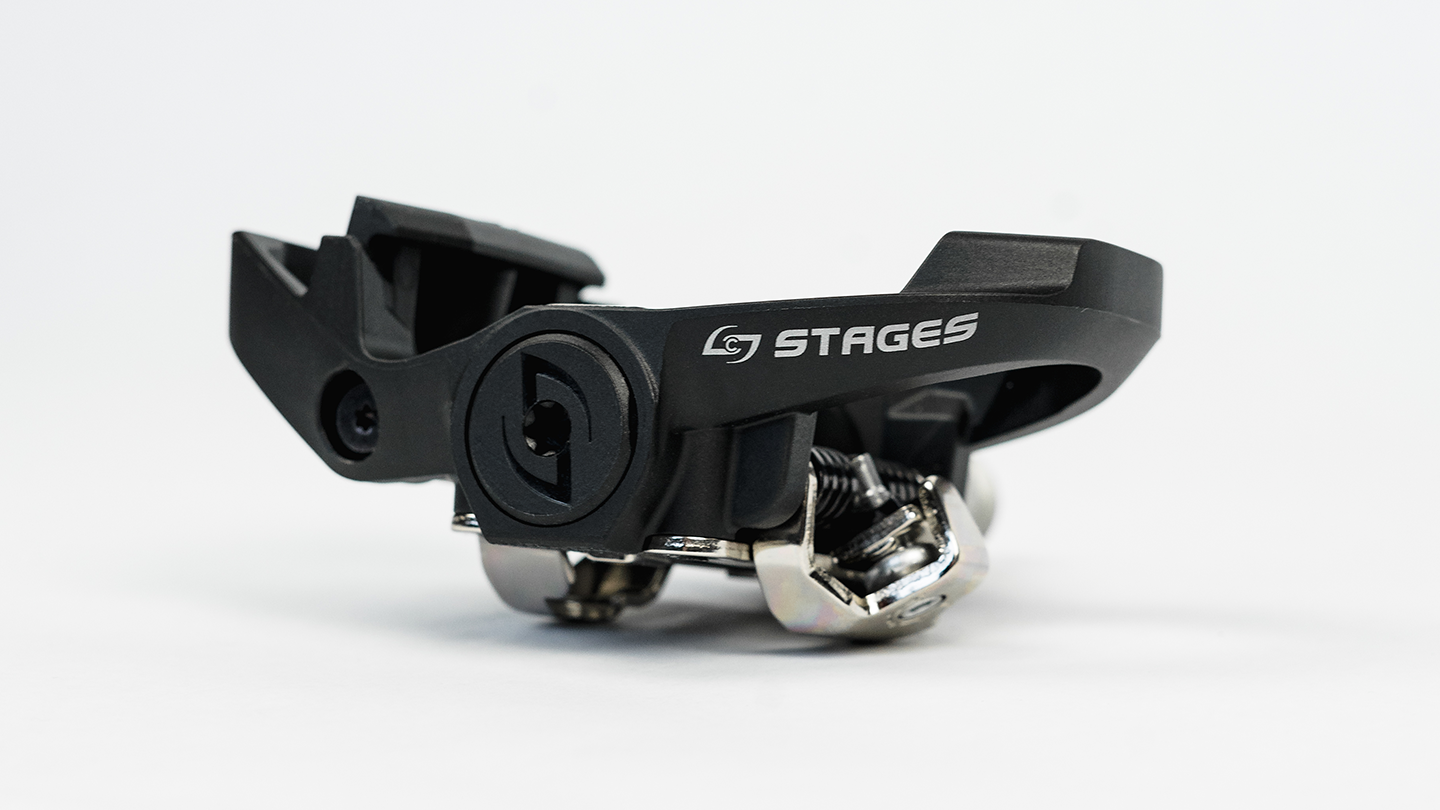7 Keys to Winning Road National Championships
- By Benjamin Sharp
- Published: Oct 6, 2022
- Last Updated: Oct 17, 2022
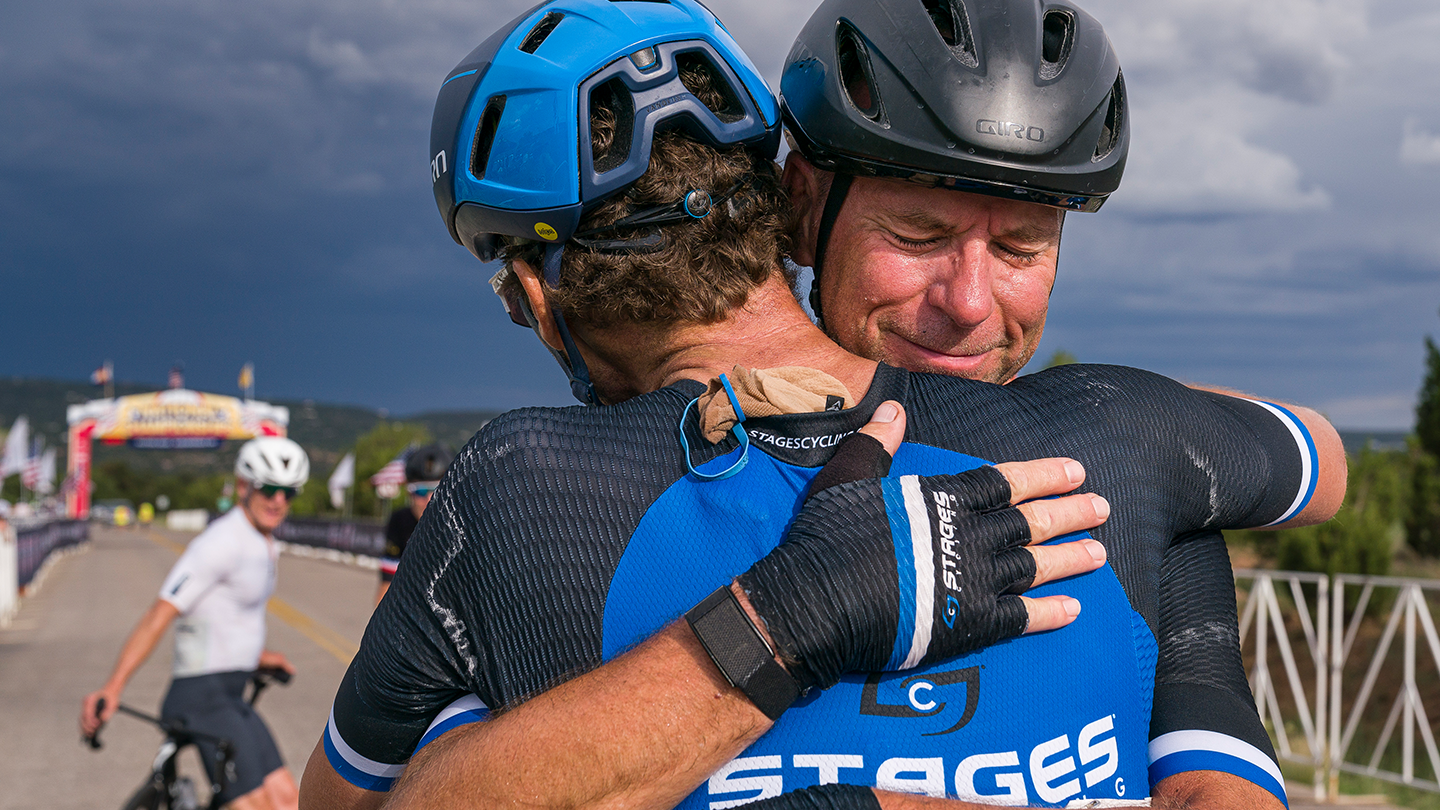
I’m Benjamin Sharp, Cycling Coach and Power Education Specialist at Stages Cycling. This is the third and final part of the series detailing successes at the 2022 USA Cycling Masters Road National Championships in Albuquerque, NM. Part one of this series, can be found here and part two can be found here.
A SUDDEN CHANGE IN FORTUNE
My last remaining companion and I swapped a couple turns at the front but, his pulls were getting shorter and a little bit softer. The strong and firm posture he had been maintaining on his super unique pink Trek Madone was now replaced by a demonstration of fatigue; his shoulders were slumped and his head was hanging low. His black shorts were covered in salt. After asking his name, I asked him if he was committed to the finish. His response wavered and it was apparent he was crumbling. I was well stocked with food and fluids after having picked up bottles in three feed zones. Again, trying to keep what remained of the band together for the upcoming headwind, I asked Butch if he needed anything. Food? Fluids? He asked if I had water and I replied that I had a bottle of drink mix he could have. I handed him the bottle as I took over making pace on the front.
Just a few seconds later, I heard an expletive yelled from behind and over my shoulder I saw that the cranks on the pink Trek were no longer turning. Butch had cracked. Now, I doubt that I was more discouraged or disappointed than he was but I was not at all happy about the situation. Within a span of five minutes, I had gone from sharing pace making with three other strong riders to being on my own, with about 30km (18 miles) to go, more than half of which was going to be in a straight headwind that seemed to be growing stronger by the minute.
I set out to stay away from the hard charging peloton as long as possible and hope that Pat was with whatever was left of the group that caught me. Then, Pat and I could switch roles, he could attack (after having sat in the draft of the chasing riders) and I could follow whomever took up chase after him. My speculation of the likely outcome hadn’t changed much from the bottom of the second ascent; though now I was sure I would be caught even sooner than I had estimated just 15 minutes earlier.
Thus far, I had done a good job of fueling and had followed my eating and drinking strategy to perfection. I was also relatively cool thanks to the ice socks I had picked up in the feed zone. Even though I had been in a small group for about an hour, I had good energy levels and was very motivated to delay getting caught to as close to the finish line as possible. There really was nothing left to do but put my head down and ride as hard as I could for the remaining 45 minutes or so.
(REAL AND IMAGINARY) PRACTICE MAKES PERFECT
Fortunately, I have practiced this exact scenario, both formally and informally hundreds of times in my career of riding bikes. As a rider, I have plodded my way through the last hour or two of longer solo rides with race commentary spooling through my head. Having the imagination of an only child allows me to see myself entering the velodrome in Roubaix or into the town of Oudenaarde after dispatching imaginary breakaway companions and soloing in for the “victory” a la Johan Museeuw or Fabian Cancellara (I’m showing my age here but, I am discussing a Masters National Championship so it’s age appropriate).
Little did I know that thirty-plus years of those imaginary races would prepare me for an event as a fifty-year-old. As a coach, in the last year or so, I have started assigning a workout to athletes called “ERS” or, End of Race Simulation. The concept is pretty simple. After a few hours of endurance riding, increase power throughout the last hour of a training ride, so that you have completely exhausted your energy as you pull into your driveway. This workout can replicate the demand of the endgame of a race as the intensity heats up in the closing kilometers.
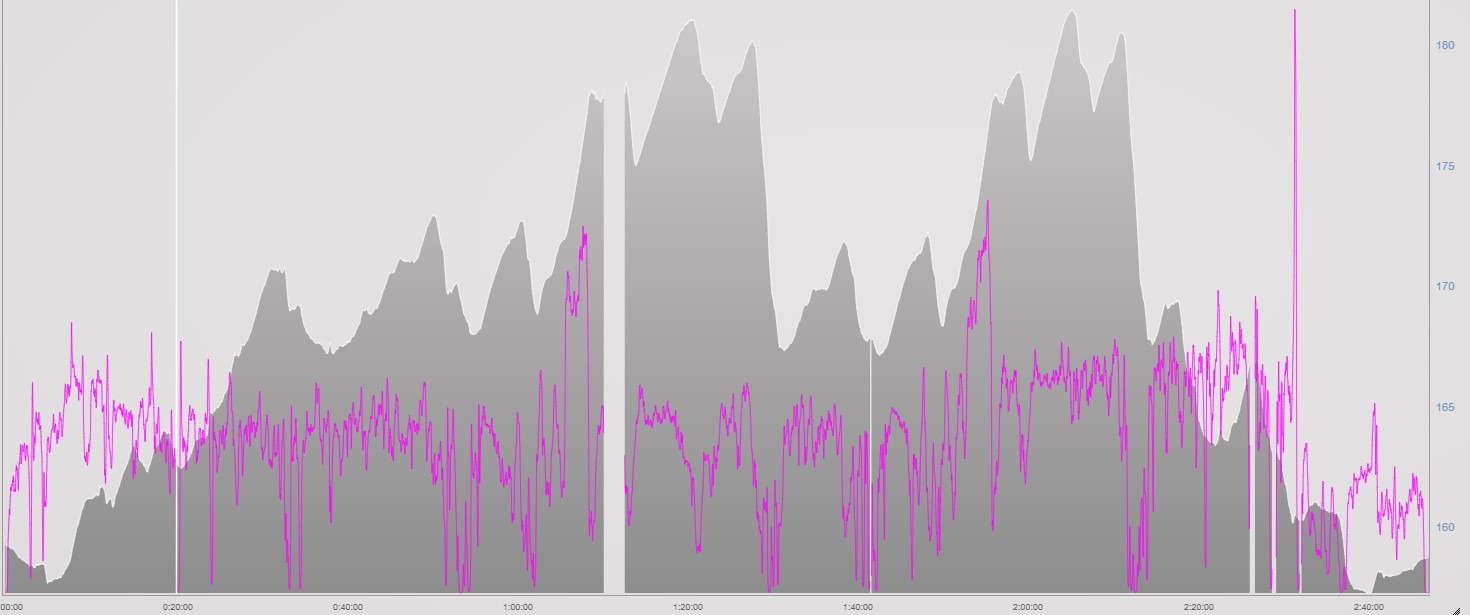

Example of an ERS workout on the Morgul-Bismark course in Boulder, from five days before the nationals road race. This is a close simulation of the demands of this particular road race with the two hard climbing efforts and the big push in the last hour of the ride. Of course it’s not exactly the same as the power file recorded during the race but this workout did serve as a reasonable preparation exercise for me as well as the athletes I coach that raced in the Championships.
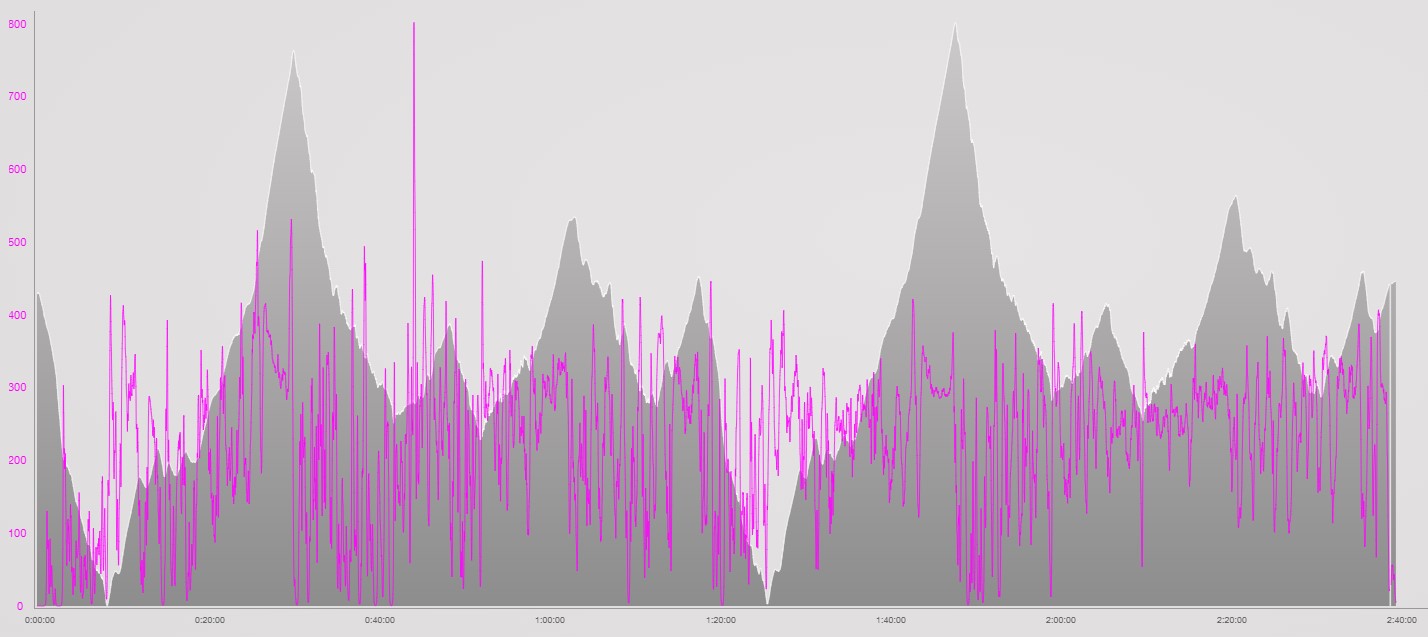

For the sake of comparison, here is the power file recorded from the National Championships Road Race.. Note in the “by the numbers” section below that the highest average sustained powers for the race took place in the last hour, not unlike the ERS Simulation.
GOOD NEWS/BAD NEWS
With about 25km (16 miles) remaining I made the turn into the headwind and toward the finish line. I got several time checks from the motor official and my gap hovered at about 1 minute for km after km. I employed my best time trialing technique, trying to maximize my opportunity for speed and minimize my time over the remainder of the course. My eyes and attention alternated between taking the safest, cleanest, shortest line on the road, to my Dash L200 head unit. At about 15km to go, still a minute ahead, for the first time I had the thought that I might hold on to the finish.
It was a fleeting thought though as I started working through the calculus of the distance remaining, my speed, and the potential speed of the peloton, just 60 seconds behind. I did ask the motor official how many people were chasing. I’m not sure why that mattered as my job was simple, to ride as fast as I could to the finish. I had no control over the goings on behind me. He informed me that the gap was still a minute and that there were 13 riders in the chase. With that many riders left in the group, my confidence that Pat was still in the group was very high. I was also certain that not all 13 riders would be chasing.
At the 10km (6 miles) to go point, the motorcycle official shouted that he didn’t have a time check but that I had a “big ass gap”. That’s sort of comforting. But, as someone that tends to disassociate from the pain of riding a bike hard, with arithmetic and calculus, he didn’t give me much concrete information to go on. So, for the sake of creating a worst-case scenario for the situation, I estimated the gap to be a minute. If I had thought it was a bigger gap, my brain might successfully talk my legs and lungs into backing off a bit because “it was in the bag”. No matter what, I had to keep pedaling. My speed was about 38kph (24mph) at this point which is close to 1m35s per kilometer. In my estimation, the field should have been traveling about 42kph (26mph) or about 1m25s per kilometer. I had a 60 second advantage with 10km to go but, was losing approximately 10 seconds per kilometer. By my calculation, I would get caught 4km from the finish. I didn’t have much more to give but I had to keep trying to ride full gas, knowing I only had about 15 minutes of racing left.
With approximately 8km (5 miles) remaining, the motor official gave me a new time split. He told me I had a two-minute gap on a 12-rider group. Two minutes!?!??!? That’s the largest gap of the day! Nevertheless, I didn’t let my mind stray from the task; pedal hard and make the bike go as fast as possible for the remainder of the race. I got my next time check 1 kilometer later, at the 7km-to-go mark. A different motorcycle official told me my gap was a minute and the group was single file. Whaaaat!?!? Instead of fixating on who was right and who was mistaken, I assumed, again, the worst-case scenario was the most accurate and that the two-minute split I had been given was incorrect.
The good news was that this worst-case scenario; being 1 minute ahead with 7km to go, was much better than the worse-case scenario at 10km to go, when I also had a minute. If the 7km split was accurate, I could bleed up to 8 seconds per kilometer and hang on, rather than the 6 seconds per kilometer I had in hand at the 10km to go point. I also knew that at about 2.5km to go, there was a right turn onto a bigger road that was false flat downhill with a tail/crosswind that lasted for 2km before making the turn onto the finishing straight with 500m to go. I didn’t figure that the chasing group could go much faster than I could after the turn at 2.5km to go. I’m a heavier rider, on a very aerodynamic bicycle, and obviously very motivated to reach the finish line.
There were a few short hills before the right turn to home. I flattened those as best I could by charging up them and getting up to speed as quickly as possible when the gradient relented. I rested as much as I could on the downhills but with the headwind, I still had to press on the pedals.
After the official race signage indicated I was at 5, 4, and 3 kilometers to go, at the crest of another momentum-sucking grade, I finally made the right turn onto the “big road”. My speed immediately increased to over 50kph (30mph). Now, there was no holding back. Uphill, downhill, headwind, tailwind, it didn’t matter. My job was to produce as much power as possible to go as fast as possible.
FINALLY, THE FINISH!
With 600m to go, I made the left turn into the finish straight. Of course, that left turn put me face to face with the headwind and a deceptively challenging ever-so-slight uphill to the finish gantry. For the first time in about an hour, I afforded myself a look back to make sure, absolutely sure, that no one was sneaking up to me from the peloton. I saw no one on the road behind me. I heard some friends cheering for me at about 100m to go. I gave a short salute to my wife Jennifer, raised my hands in victory, then grabbed my helmet/head in disbelief. After the finish I was immediately greeted by three of my teammates who had finished their national championship road race minutes before, in the 45-49 age group. Within seconds, just 27 seconds, to be exact, the remaining field of 12 riders sprinted to the finish for 2nd, led by Pat who claimed the silver medal.
So, that’s the narrative through my eyes, of what took place. Now let’s look at the data!
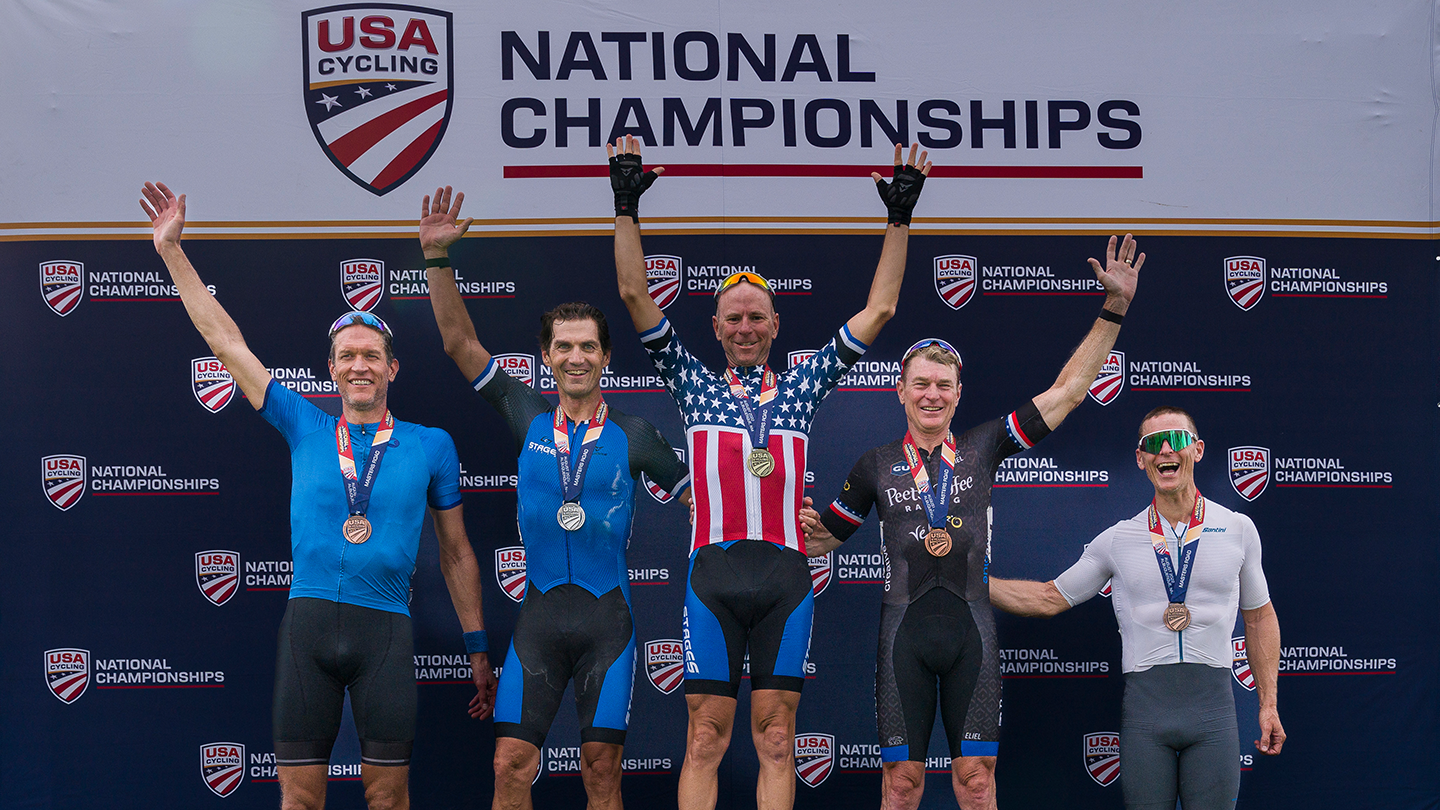

Enjoying sharing time on the podium with Pat Warner.
the race by the numbers
- Duration: 2h39m
- Distance: 102km (63 miles)
- Average Elevation: 2084m (6837 feet)
- Elevation Gain: 1216m (3990 feet)
- Average Temperature: 30C (86F)
- Average power: 220w
- Peak power: 1087w
- Adjusted power: 258w
- Average cadence: 89 rpm (including 0’s or non-pedaling events with speed recorded)
- Average speed: 38.2kph (23.7mph)
- Peak 1m power: 406w (start of steep portion of first-time up Heartbreak Hill)
- Peak 5m power: 354w (first climb up Heartbreak Hill). 2nd best 5m power at altitude in 2022
- Peak 10m power: 283w (lead in and first climb up Heartbreak Hill)
- Peak 20m power: 263w (solo in headwind until 2.5km to go in race)
- Peak 60m power: 244w (from lead in to second climb up Heartbreak Hill to 2.5km to go)
the rider by the numbers
- Age: 50
- Height: 182cm (6’0”)
- Weight: 76kg (168 lbs)
- FTP: 310w at moderate elevation
Looking at these recorded numbers, there is nothing remarkable about them.
Note: For those of you comparing at home, you have to remember that the event took place at a moderate elevation which will reduce maximal performance potential due to the lower atmospheric pressure which inhibits the delivery of oxygen to working muscles. For someone coming to Albuquerque from sea level, a reduction in performance by as much as 10% might be observed. I live, train, and race at an altitude that is similar to what I encountered in Albuquerque. The majority of recorded data from my 2022 season came from performances at moderate altitude.
Only the 5m average power from above registered as a top-10 performance for the entire year of recorded data. Additionally, my average power for 2 hours registered as a top-10 performance for this season. Otherwise, despite crossing the finish line first, there wasn’t anything extraordinary about the event for me, from a performance perspective. This serves as a great reminder that it’s not always the strongest rider that wins the race. I was lucky enough to capitalize on the situation to get this victory. Outside of an ability to push hard for a couple hours, the primary factors that contributed to the win had more to do with preparation and tactics than raw power.
Factors Contributing to Nationals Win
- Knowing the details of the course that allowed me to form a reasonable strategy and select proper equipment.
- My willingness to take a risk and attack, even if it was more of a preventative defensive maneuver to make sure that the dominant Peet’s Coffee team was marked in the breakaway.
- Not having a Peet’s rider in the group of four that eventually formed.
- Having (and following) an effective nutrition/hydration/cooling strategy and reaping the benefit of having a friend in the feed zone to assure that I got a fresh bottle and ice sock on each of the two laps.
- Complete faith that I had a strong teammate defending the breakaway and saving enough energy to be a factor in the endgame of the race should my move be caught.
- Recognizing my strength on the flats and exploiting that strength in the breakaway. I used the data I was getting, both from my Stages Power meter and the moto referees to meter my effort appropriately.
- The physical and mental practice of this “End of Race” situation. Thanks to hundreds of solo training rides over the past thirty-five years that, even if in my imagination, ended with a similar type of effort.
As covered in a previous post, victory in the Masters Road National Championships was unexpected. I didn’t commit to competing until the week before the race. I had no pressure to perform for myself and had the luxury of racing with the two-time defending champion on my team. I certainly benefitted from the giant target on his back and set off in the breakaway to potentially set him up for the win. In the end, I had just enough fitness to carry me to the line less than 30 seconds faster than the peloton, thanks to my committed breakaway companions and the two-minute head start we earned part-way through the second lap.
Photo credits: Craig Huffman











